
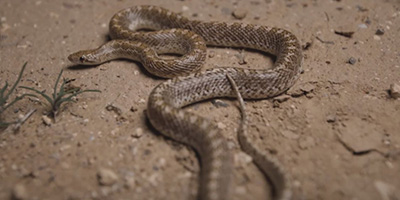 Desert Glossy Snake:
The glossy snake is similar in terms of appearance to the gopher snake. What differentiates them from one another is how they are smaller in size and have narrow pointed heads.
They also appear pale which is why they are commonly called “faded snakes”. Their colors are usually brown, tan, and gray with spotted patterning on glossy skin.
They are nocturnal predators whose main food source are lizards, small mammals, and birds who kill their prey.
Desert Glossy Snake:
The glossy snake is similar in terms of appearance to the gopher snake. What differentiates them from one another is how they are smaller in size and have narrow pointed heads.
They also appear pale which is why they are commonly called “faded snakes”. Their colors are usually brown, tan, and gray with spotted patterning on glossy skin.
They are nocturnal predators whose main food source are lizards, small mammals, and birds who kill their prey.
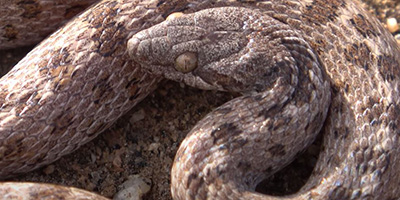 Desert Night Snake:
These are small tan or light brown snakes with dark brown blotches running down the back. Usually, they would have large dark spots on the sides of their neck, sometimes merging to form a dark band.
Their heads are rather pointy and appear to be in a triangular shape.
They occur in different places which include rocky and sandy areas from desert flats and mountain meadows.
Although they are sometimes mistaken for rattlesnakes, they don’t have a rattle at the end of their tails and they are a non-venomous species.
Desert Night Snake:
These are small tan or light brown snakes with dark brown blotches running down the back. Usually, they would have large dark spots on the sides of their neck, sometimes merging to form a dark band.
Their heads are rather pointy and appear to be in a triangular shape.
They occur in different places which include rocky and sandy areas from desert flats and mountain meadows.
Although they are sometimes mistaken for rattlesnakes, they don’t have a rattle at the end of their tails and they are a non-venomous species.
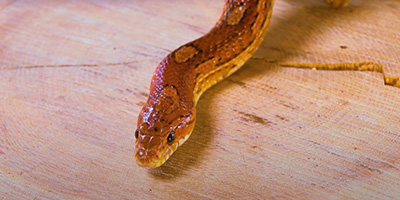 Corn Snake:
A common choice to keep as a pet is the corn snake. They are found in woodlands and forests and can be wild-caught.
Their ground color ranges from orange to gray with orange, brown, or reddish patterns bordered with black on the back and sides. Their belly is checkered black and white while the tail is striped.
Corn snakes don’t normally bite or attack humans. Most of the time, they are docile and wouldn’t be the type to fight back when scared.
Corn Snake:
A common choice to keep as a pet is the corn snake. They are found in woodlands and forests and can be wild-caught.
Their ground color ranges from orange to gray with orange, brown, or reddish patterns bordered with black on the back and sides. Their belly is checkered black and white while the tail is striped.
Corn snakes don’t normally bite or attack humans. Most of the time, they are docile and wouldn’t be the type to fight back when scared.
Venomous Snake Species in Las Vegas
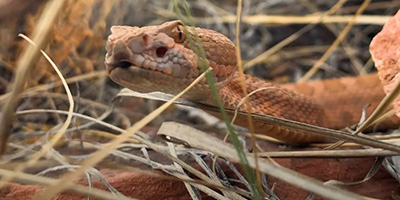 Grand Canyon Rattlesnake:
These snakes are venomous and reach up to 54 inches in length. While their background color varies, they usually have dark blotches on their body -which tend to become crossbands near the tail.
They are located in a variety of habitats some of these including grasslands, cliff slopes, pine forests, and much more.
Normally, they are more active during the day time. But in some cases, they would be active throughout the day depending on the weather conditions.
Grand Canyon Rattlesnake:
These snakes are venomous and reach up to 54 inches in length. While their background color varies, they usually have dark blotches on their body -which tend to become crossbands near the tail.
They are located in a variety of habitats some of these including grasslands, cliff slopes, pine forests, and much more.
Normally, they are more active during the day time. But in some cases, they would be active throughout the day depending on the weather conditions.
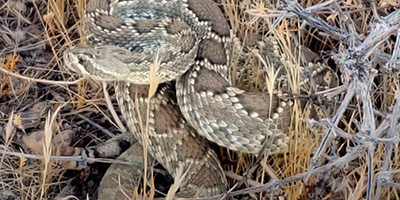 Mojave Green Rattlesnake:
This venomous species commonly has a background color of dark green or olive-green with distinct dark diamonds offset with light borders running down the center of the back. Their tails have black and white bands as well.
They may sometimes be confused with the western diamondback rattlesnake but can be told apart because of the narrow black bands on their tail and upper white eye stripe extending beyond their mouth corners.
Their venom is said to attack the nervous system much stronger than that of other rattlesnakes.
Mojave Green Rattlesnake:
This venomous species commonly has a background color of dark green or olive-green with distinct dark diamonds offset with light borders running down the center of the back. Their tails have black and white bands as well.
They may sometimes be confused with the western diamondback rattlesnake but can be told apart because of the narrow black bands on their tail and upper white eye stripe extending beyond their mouth corners.
Their venom is said to attack the nervous system much stronger than that of other rattlesnakes.
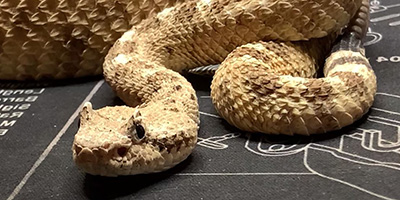 Mojave Desert Sidewinders:
Among different venomous species, the Mojave Desert sidewinder is relatively small compared to its rattlesnake relatives.
They have the ability to camouflage excellently to help them escape from predators and become somewhat invisible to their prey.
These are one of the few snakes that move in a side-winding motion -which is what creates J-patterns to form on sands they pass through.
They are also identified by the scales above their eyes that are said to act as a shade for when the sun is high or to prevent sand from obscuring their vision when they keep themselves buried under.
Mojave Desert Sidewinders:
Among different venomous species, the Mojave Desert sidewinder is relatively small compared to its rattlesnake relatives.
They have the ability to camouflage excellently to help them escape from predators and become somewhat invisible to their prey.
These are one of the few snakes that move in a side-winding motion -which is what creates J-patterns to form on sands they pass through.
They are also identified by the scales above their eyes that are said to act as a shade for when the sun is high or to prevent sand from obscuring their vision when they keep themselves buried under.
If you're unsure, you can email me a photo of the snake at info@lasvegassnakes.com and I will email you back with the snake's species. If you found a snake skin, read my Found a Skin? page, and you can email me a photo of the skin, and I'll identify the snake for you. If you need professional Las Vegas snake removal help, click my Get Help page, or see the below website sponsor I found, who provides that service.